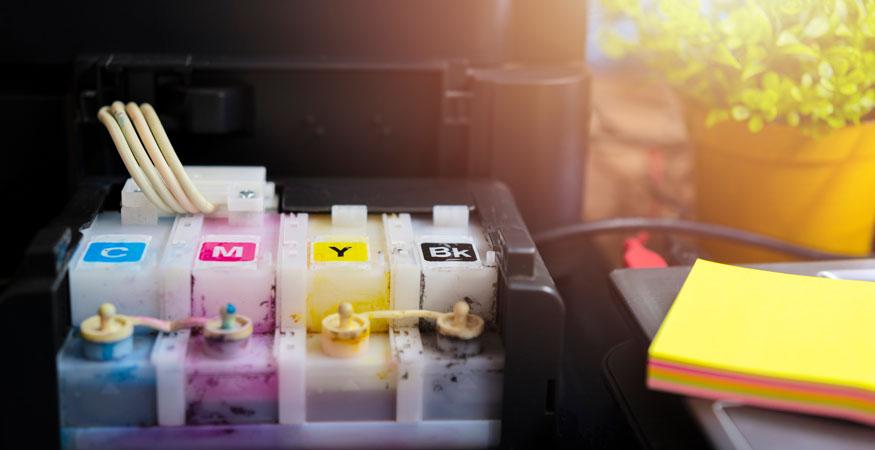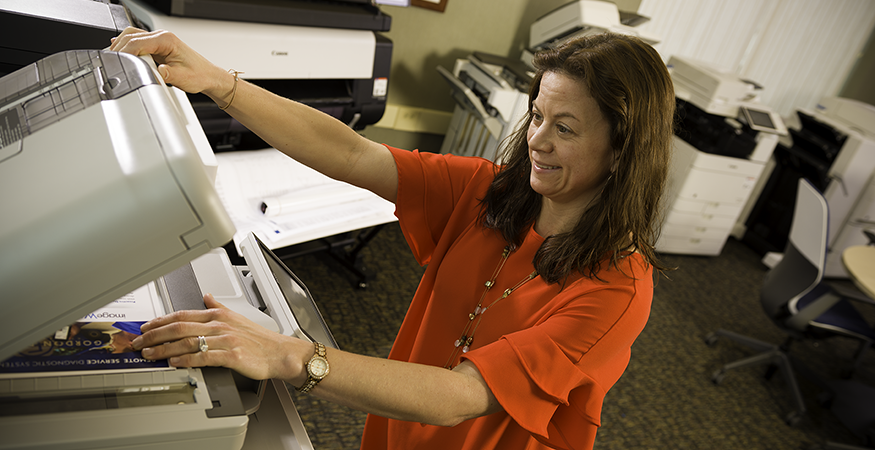Any networked device can pose a security threat to your business. Yes, this includes your networked printers, copiers, fax machines and multifunction printers. These devices can store data, just like your computer. They are also a potential endpoint that hackers will probe to try and enter your organization’s network.
In fact, the Ponemon Institiute, an independent research firm centered on privacy, data protections and information security policy reported that 56% of companies ignore printers in their endpoint security strategy.
Be proactive. Conduct a security assessment on your print fleet to know where any vulnerabilities may be hiding and correct them before a hacker strikes.
Here’s an outline of what you’ll need to know in order to get started.
RELATED ARTICLE: The Top 7 Network Printer Security Best Practices
Conduct a Print Fleet Audit
The first step is to do an audit of all of your print devices. Many organizations think that they know where all of their devices are, until they take the time to do a complete inventory. This is often when it is discovered that some machines have been moved to alternate locations to increase employee efficiency or are broken and have been transferred to a storage area.
Be sure to include all print-related devices as a part of your print audit, including multifunction printers, scanners, copiers, fax machines and plotters. And note the type, brand, functions and physical location of each device.
Creating a map showing where the devices are located is also a great way to visualize where they are and how far your staff will travel to get to a selected device.
This audit will help to fuel your print security assessment and create better buy-in throughout your organization.
Evaluate the Features in Use on Each Printing Device
Is the manufacturer’s default administrator password still active on your devices? Hopefully not. But this is a great time to check and see if your devices have been set up securely. Be sure to evaluate security procedures such as:
- Changing manufacturer default administrator password
- Upgrading firmware to the most recent version
- Disabling unused protocols or interfaces
- Disabling unused services or ports
- Disabling weak cipher levels
These security procedures are crucial to guarding your print devices. If left unprotected, you could be leaving your machines available for hackers to potentially access sensitive information.
In addition to checking for firmware updates, also take note of how and when you will check for updates again in the future. Popular options include:
- Enrolling in a Cloud Fleet Manager through a Managed Print Services (MPS) provider for automatic firmware upgrades
- Updating firmware by yourself
- Having your MPS provider update the firmware when a Service Technician is on-site
Documenting your plan for firmware updates will assist in keeping this important task, top of mind.
Create a Procedure for Removing Memory When Print Devices Are Decommissioned
Most printers have hard drives, system memory, operating systems and applications – the same as any computer. That’s why we recommend the best practice of having a plan in place for clearing a print device’s stored memory when decommissioning a machine. This will reduce your security risk by deleting any confidential stored information.
You can remove printer memory yourself by removing any memory cards, volatile memory and non-volatile memory. Or check with the printer manufacturer or your MPS provider to find out if they are able to delete saved data from your old machines.
RELATED ARTICLE: How to Erase Your Printer’s Hard Drive
For instance, Troyka-TC (GFC) destroys all printed document history at the end of a print machine’s service – even if the machine didn’t come from us. We’ll even provide a certificate, authenticating that all printed document history has been destroyed. And we’ll review any applications and service logs to ensure that they’re properly configured and don’t contain a list of failed prints or previously printed data.
Security Options to Consider
Once you have your print fleet mapped out, survey your staff to see if your current devices are meeting their needs or if alternate devices may assist them in being more productive. In addition, consider the location of your shared devices.
A printer at or near a reception desk may be at risk of having documents viewed by visitors in your waiting area. Consider relocating this machine or adding side shields at the document output. Locking paper drawers will also better secure customized paper options such as organizational letterhead.
Every organization should be concerned about print security. However, some industries such as healthcare and education have additional regulations designed to protect data.
Follow Me printing (also known as Find Me printing) is a tool that assists in increasing document security as a part of a zero trust printing policy as well as reducing paper waste.
End users submit their print jobs to a central network queue. Then they must authenticate themselves at the device with a Personal Identification Number (PIN), password or security programmed magnetic swipe card in order to request the digital document be released and printed. Security administrators can also restrict user access to selected devices for extra added security.
Enlist the Assistance of a Managed Print Provider
A professional assessment of your business technology could help identify gaps in your print security strategy and opportunities for streamlining your processes. Contact the Troyka-TC for a technology needs assessment, today!
It’s our people who set us apart from other business technology providers. We’re here to find technology solutions that fit your processes, budget and solve your organization’s challenges.
Want to learn more about why print security is important, how it works and what you can expect from implementing a proper endpoint security strategy? Click the link below to download your complimentary copy of our Quick Guide to Print Security.










